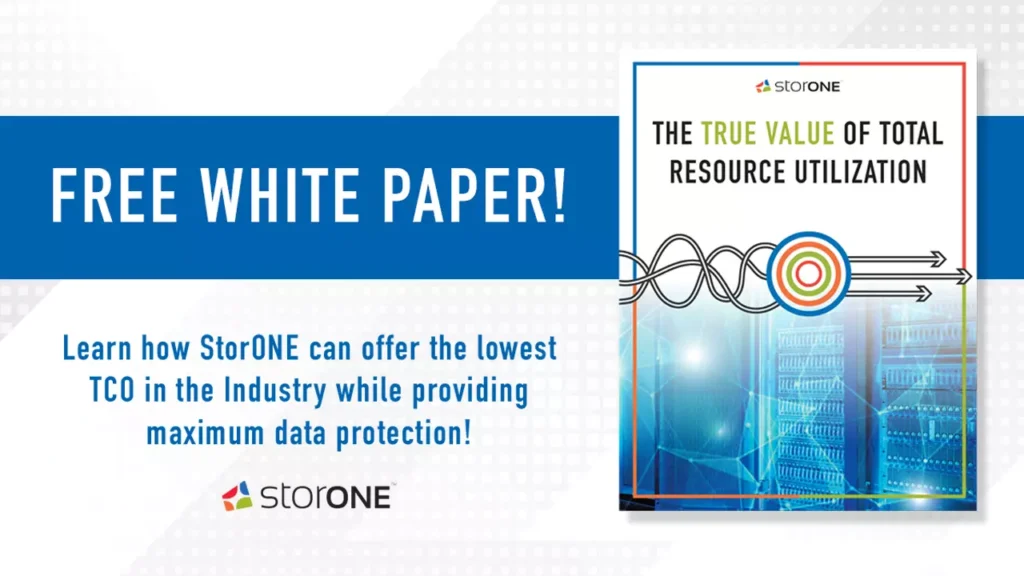While most vendors take a “systems” approach to storage, StorONE takes a platform approach to storage. What is the difference? Only a platform approach enables you to benefit from the minimal total cost of ownership (TCO) and maximum data protection while still meeting a broad range of capacity and use case needs.
What is a Systems Approach to Storage?
The “systems” approach to storage, used by our competitors, attempts to race quickly to market and solve one specific storage challenge you are facing. It could be making high-end databases perform better, making VMware storage simpler to deploy, or addressing HPC and analytics workloads’ unique demands.
While these solutions may be acceptable, individually, they don’t address the bigger problem, how to reduce the total cost of ownership while making sure your most critical asset, data, is well protected. Besides adding more hardware (and cost), their answer for more performance is to lower data protection levels. Any increase in data protection levels almost always decreases performance. The problem is typical storage solutions rely on the legacy storage IO stack and code that is literally decades old. They put a friendly GUI and features for the specific use case they claim to address on top of that inefficient stack.
The result is a higher total cost of storage infrastructure and a higher cost of ownership even within each case. Legacy vendors can’t optimize their solutions to leverage the constant innovations in storage hardware. They must also limit their ability to protect data within the system because of the inefficient, aging software stack, where each additional layer of protection impacts system performance. This compromise forces customers to layer in separate and expensive backup and disaster recovery products, further increasing cost and complexities.
The choice to get to market quickly by leveraging the existing storage stack also means today’s storage vendors don’t control the underlying components in their solutions. Even if these vendors invented a new way to read, write or protect data, they couldn’t implement it in their code because they didn’t develop its foundational elements. This lack of control is why these vendors can only add layers on top of what is already in place instead of replacing it.
What is a Storage Platform
A platform approach to storage is something that, until StorONE, we’ve not seen in the industry for two decades. When we say platform, think of data-center-changing architectures such as virtualization for servers, software-defined networking (SDN) for networking, and now StorONE’s Enterprise Storage Platform. All are orders of magnitude more efficient and reliable than the architectures they replace.
Instead of racing to market, StorONE spent its first eight years rewriting the old storage algorithms and replacing the legacy storage stack with a single-layer storage engine. The S1 Engine powers our Storage Engine and is the first software storage solution to reduce data center total cost of ownership (not just storage) while maximizing data protection.
Our Storage Platform software turns standard server hardware into high-performance storage controllers that can deliver the performance and capacity required to meet all your storage challenges both in your data center and in the cloud. The S1 Platform simultaneously meets all types of performance demands (high-transaction and high-bandwidth) and all types of capacity (dozens of terabytes to dozens of petabytes) while eliminating the need for external data protection and disaster recovery tools. With StorONE, you can protect data as thoroughly as your needs require and not worry about impacting performance or sacrificing protection due to budget constraints.
A Storage Platform vs. Storage Consolidation
In some ways, a storage platform may sound like a storage consolidation solution. However, a storage consolidation solution simply attempts to replace a few storage systems with one storage system, but it has its limits. These vendors still build their systems on legacy IO stacks. They may provide more protocol support or better scaling, but they always run into limits, forcing the customer to add other solutions. The result is that the consolidation effort quickly unravels.
Additionally, consolidation solutions often have a high price tag, which means the customer has to buy separate, less expensive storage systems for both mainstream workloads and data protection. These consolidation solutions also can’t “fit” into the cloud, forcing the customer to buy yet another storage solution that runs in-cloud.
Because we invested eight years in rewriting old storage algorithms and flattening the storage IO stack, the StorONE Storage Engine can simultaneously provide the performance that a high-end database requires and still be cost-effective for mainstream virtualized workloads. The same platform can even extend into high-end unstructured data workloads. It also provides data protection powerful enough to replace traditional backup and archive solutions at an aggressively low cost/TB
A Storage Platform Approach Simplifies Your Life
The Storage Engine provides a single interface into all storage operations, large and small. It replaces dozens of storage systems, archiving solutions, and data protection processes. Our platform has an affordable upfront price, the lowest operational costs, and a migration-free future.
A platform approach to storage enables costs and operational savings to ripple through the entire data center. Most importantly, the organization’s most critical asset, data, is better protected than ever. The platform protects you from data corruption, ransomware, accidental or purposeful deletion, and a full range of physical failures, including disk enclosures, rack, and complete site disaster.

You can learn more about how a storage platform approach reduces storage TCO by downloading the Whitepaper “The True Value of Total Resource Utilization.”
You can also watch our on-demand webinar: “Storage Systems vs. Software-Defined Storage Platform.”




